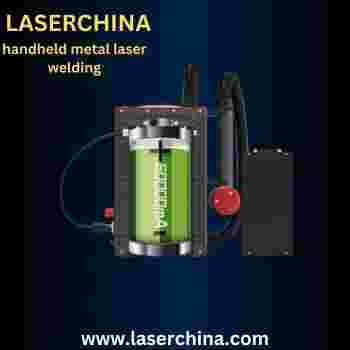-
Fil d’actualités
- EXPLORER
-
Pages
-
Groupes
-
Evènements
-
Blogs
-
Marketplace
-
Forums
-
Jeux
Mastering Handheld Metal Laser Welding: A Comprehensive Guide

Handheld metal laser welding has emerged as a versatile and efficient technique in modern manufacturing and fabrication processes. With its precision, speed, and flexibility, it offers numerous advantages over traditional welding methods. This guide aims to provide a detailed overview of handheld metal laser welding, including its principles, equipment, techniques, applications, and best practices.
Principles of Handheld Metal Laser Welding: Handheld metal laser welding utilizes a high-powered laser beam to melt and fuse metal surfaces together. The process involves focusing a concentrated beam of light onto the workpiece, generating intense heat that causes the metal to melt and form a weld pool. As the laser beam moves along the joint, the molten metal solidifies, creating a strong and durable bond.
Equipment:
- Laser Source: The laser source provides the energy needed to generate the laser beam. It can be a fiber laser, CO2 laser, or diode laser, depending on the specific requirements of the application.
- Handheld Welding Head: The handheld welding head contains the optics and focusing mechanism to deliver the laser beam precisely to the workpiece.
- Cooling System: A cooling system is essential to prevent overheating of the laser source and optics during prolonged welding operations.
- Power Supply: The power supply unit supplies electrical power to the laser source and other components of the welding system.
Techniques:
- Joint Preparation: Proper joint preparation is crucial for achieving high-quality welds. Clean the surfaces to be welded and ensure proper fit-up to minimize gaps.
- Laser Beam Focusing: Adjust the focus of the laser beam to achieve the desired weld penetration and width. The focal point should be positioned slightly below the surface of the workpiece.
- Welding Speed: Control the welding speed to maintain optimal heat input and avoid overheating or underheating the workpiece. Experiment with different speeds to find the optimal parameters for your application.
- Shielding Gas: Depending on the material being welded, the use of shielding gas may be necessary to protect the weld pool from atmospheric contamination and oxidation.
- Post-Welding Inspection: After welding, inspect the welds visually and, if necessary, perform non-destructive testing to ensure the integrity of the welds.
Applications: Handheld metal laser welding finds applications in various industries, including automotive, aerospace, electronics, and medical device manufacturing. It is commonly used for welding thin-gauge materials, intricate components, and dissimilar metals. Some typical applications include:
- Automotive Components: Welding of exhaust systems, body panels, and fuel tanks.
- Electronics: Joining of electronic enclosures, battery packs, and connectors.
- Aerospace: Welding of aircraft components, such as engine parts and structural elements.
- Medical Devices: Assembly of surgical instruments, implants, and medical equipment.
Best Practices:
- Training and Certification: Ensure that operators receive proper training and certification in handheld metal laser welding techniques and safety procedures.
- Maintenance: Regular maintenance of the welding equipment is essential to ensure optimal performance and longevity.
- Safety Precautions: Follow safety protocols to protect operators from exposure to laser radiation and fumes generated during welding operations.
- Quality Control: Implement quality control measures to monitor weld quality and consistency, including periodic inspections and testing.
Conclusion: Handheld metal laser welding offers numerous benefits, including high precision, speed, and versatility, making it a preferred choice for various manufacturing and fabrication applications. By understanding the principles, equipment, techniques, applications, and best practices outlined in this guide, you can master the art of handheld metal laser welding and achieve superior results in your projects.
- Whats New
- Shopping
- Wellness
- Sports
- Theater
- Religion
- Party
- Networking
- Music
- Literature
- Art
- Health
- Jeux
- Food
- Drinks
- Fitness
- Gardening
- Dance
- Causes
- Film
- Crafts
- Other/General
- Cricket
- Grooming
- Technology

